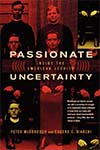Peace Corps Billikens!

Saint Louis University
RPCVs From St. Louis University
“Billikens”
by John Coyne
Two of the very first Peace Corps Volunteers in 1961 went to my college, St. Louis University: Robrrt Burns graduated in ’59 and went to Pakistan in ’61. Peter McDonough, who graduate in ’61, also went to Pakistan in the fall of ’61. They were among very first 50 PCVs to serve.
In the fall of 1961, the Peace Corps had 12,644 applications, and 913 went to training. Nearly one in five (18%) did not finish training. An additional one in ten (10%) would not complete two years of service. This is the lowest worldwide attrition rate ever recorded. (26%). Three-quarters of those who reported for training completed two years of service. The average Volunteer age was 24.5 years.
Bob Burns (East Pakistan 1961—63)
Bob Burns of St. Louis U. was first assigned to Tanzania I in July 1961. But he was then transferred to East Pakisan that started training in Putney, VT in mid-August 1961. That group was sworn in as PCVs at the ‘old’ Idlewild Airport in New York, just before departing on October 18, 1961.
Burns was assigned to work in Cumilla’s villages as project engineer in a new rural public works program. He helped the local engineers and village leaders to develop effective and dramatically cheaper methods to enhance irrigation by sinking their own tube wells–instead of waiting for costly crews to come from distant cities.
It was here also that he became one of the early Peace Corps “celebrities” when he directed a flood control project that saved a multi – million dollar rice crop. It was the first time in seven years the crop had not been wiped out in the aftermath of heavy rains.
Returning to D.C. from the Peace Corps he went to work at the agency for four years as the Desk Officer & Chief Program Development & Operations Officer for the North African Near East Division & Deputy Director, of the Trust Territory Pacific. His final Peace Corps position was as Deputy Director in Micronesia. Later he would become Vice President of TransCentury Corporation and would have several other high level jobs before dying at a young age in 1995.
Peter McDonough (East Pakistan 1961—63)
The other graduate from Saint Louis University who went immediately into the new Peace Corps after his graduation was Peter McDonough. Peter, too, was sent to Pakistan, and was stationed in Bangladesh (then East Pakistan) from mid-1961 to mid-1963, and assigned to the Cumilla Academy for Rural Development.
At the time he was an audio-visual specialist, and his job involved setting up a darkroom and other photo facilities at the Academy. He also worked on some training films about tractor driving and how to raise chickens. Peter’s training as an audio-visual specialist came from working at the St. Louis Public TV station while an undergraduate at SLU.
After returning from the Peace Corps he was a staff photographer and house-organ writer for Johns-Manville Corporation. He attended Georgetown University graduate school for a year, then with a National Defense Foreign Language Fellowship he enrolled in the graduate program in political science. He received his doctorate in 1969 for his dissertation entitled “Electoral Competition and Political Participation in India.”
It was during these years that he returned to his first love, writing.
“By the early ’80s,” Peter explained, “I had written one book on the erosion of military rule in Brazil and was embarked on another about the transition from Francoism in Spain. The cultural factor in all this, not just the Latin ambience, but also the role of the church, fascinated me.”
 He would go onto write several books, including two about the Society of Jesus, Men Astutely Trained and Passionate Uncertainty.
He would go onto write several books, including two about the Society of Jesus, Men Astutely Trained and Passionate Uncertainty.
These were two very early PCV who had also been Billikens!

Now you might ask, what is a Billiken?
An early Saint Louis University football coach, John R. Bender, is said to have been the inspiration for the nickname “Billikens,” which is still used by SLU’s teams. During the 1911 season, according to one version of the story, local sportswriters commented that Bender bore an uncanny resemblance to a charm doll called a Billiken, which was a national fad at the time. His squad became known as “Bender’s Billikens” and the name stuck.
My wife Lorelei Christl graduated from St. Louis University, but after she completed her service in 1965.
Best,
G.
What was her major, Gary?